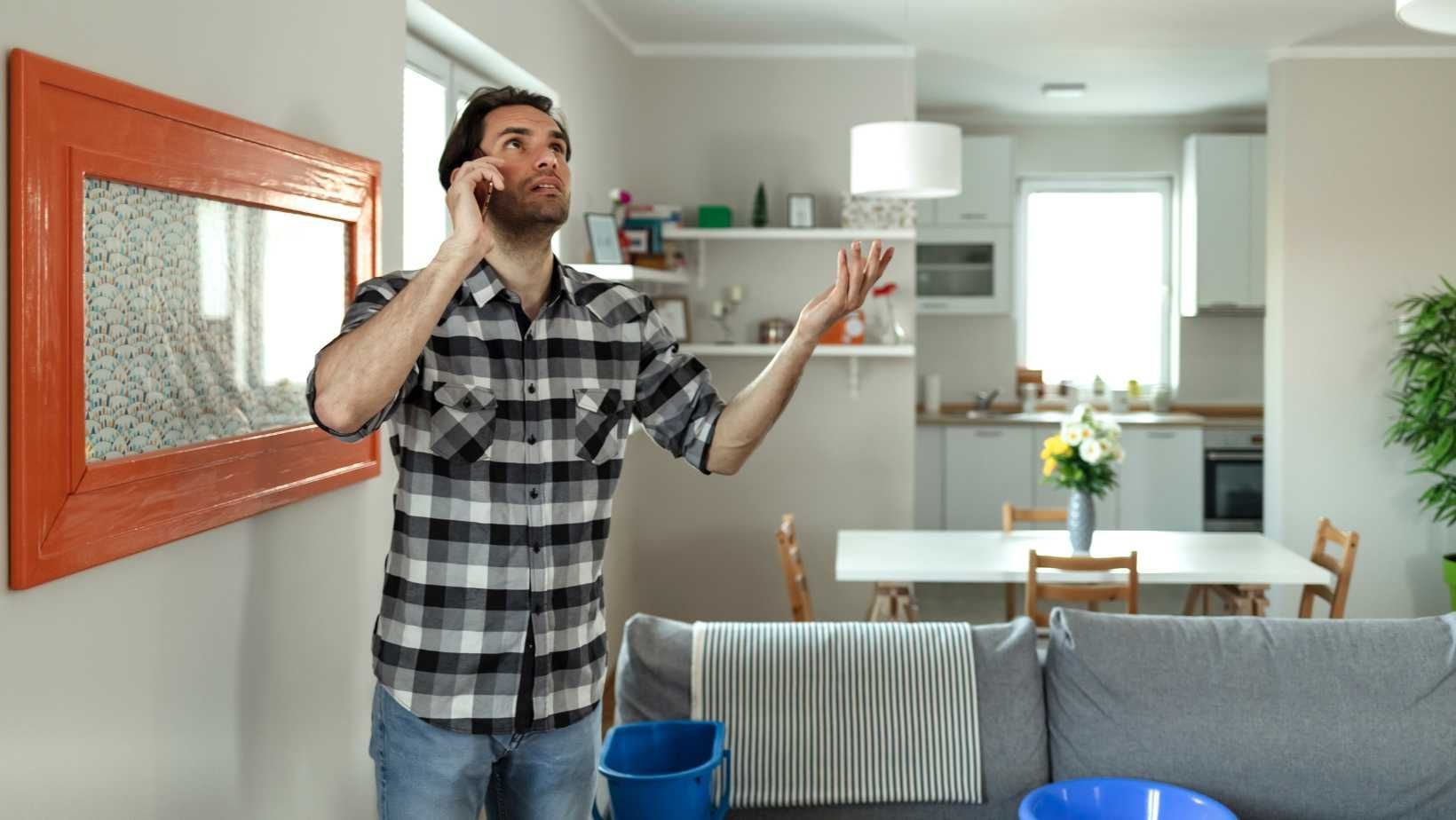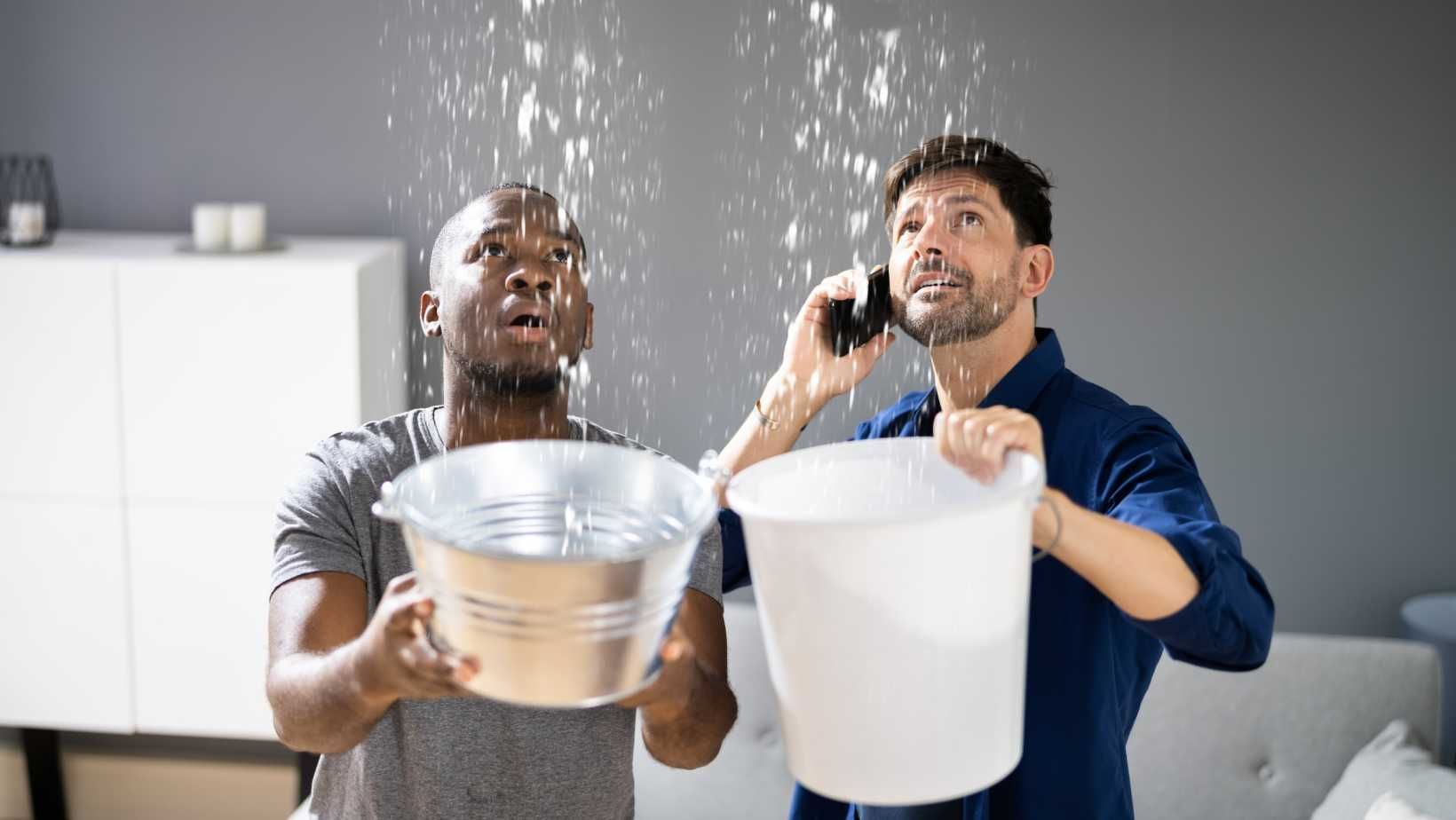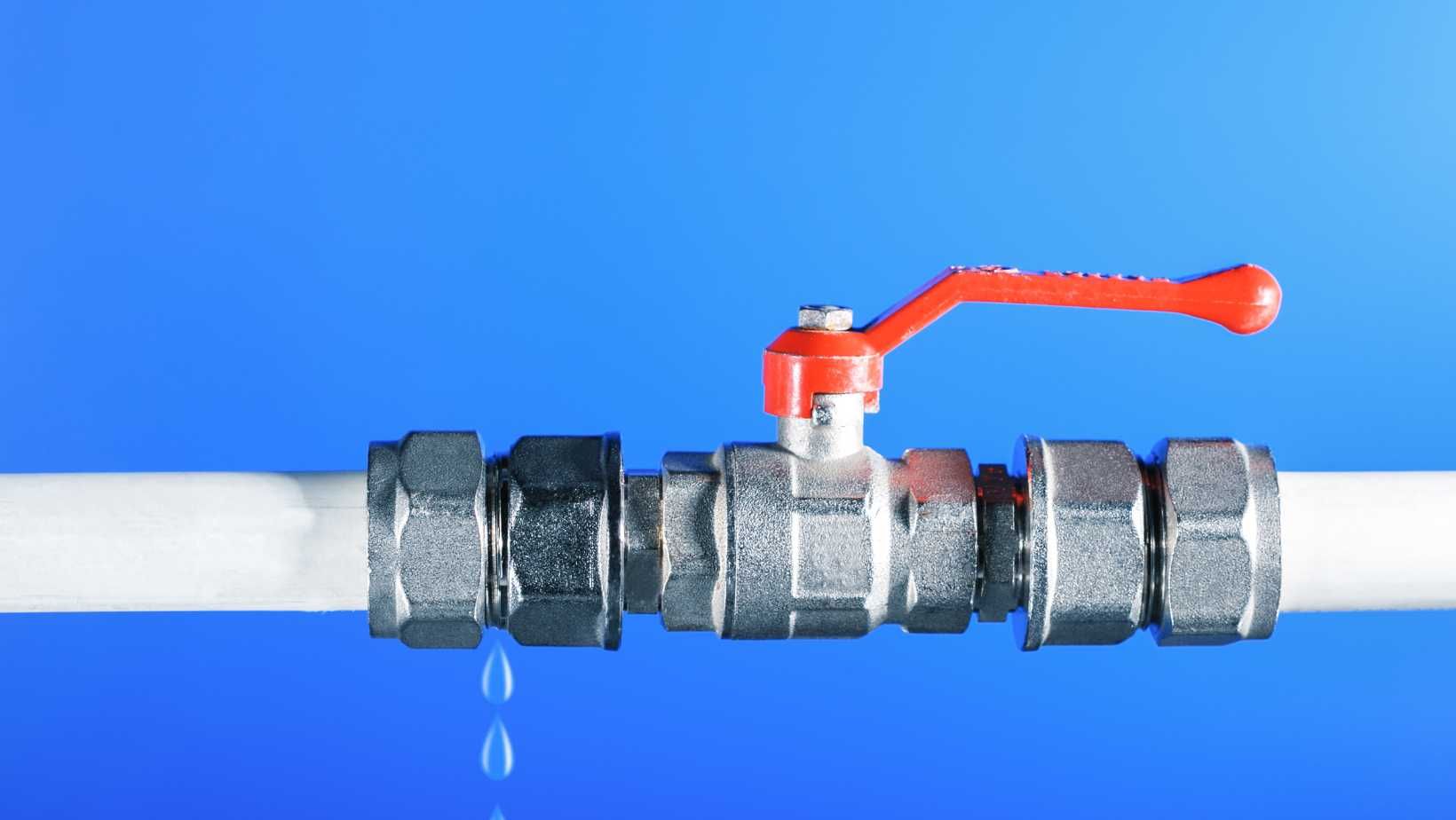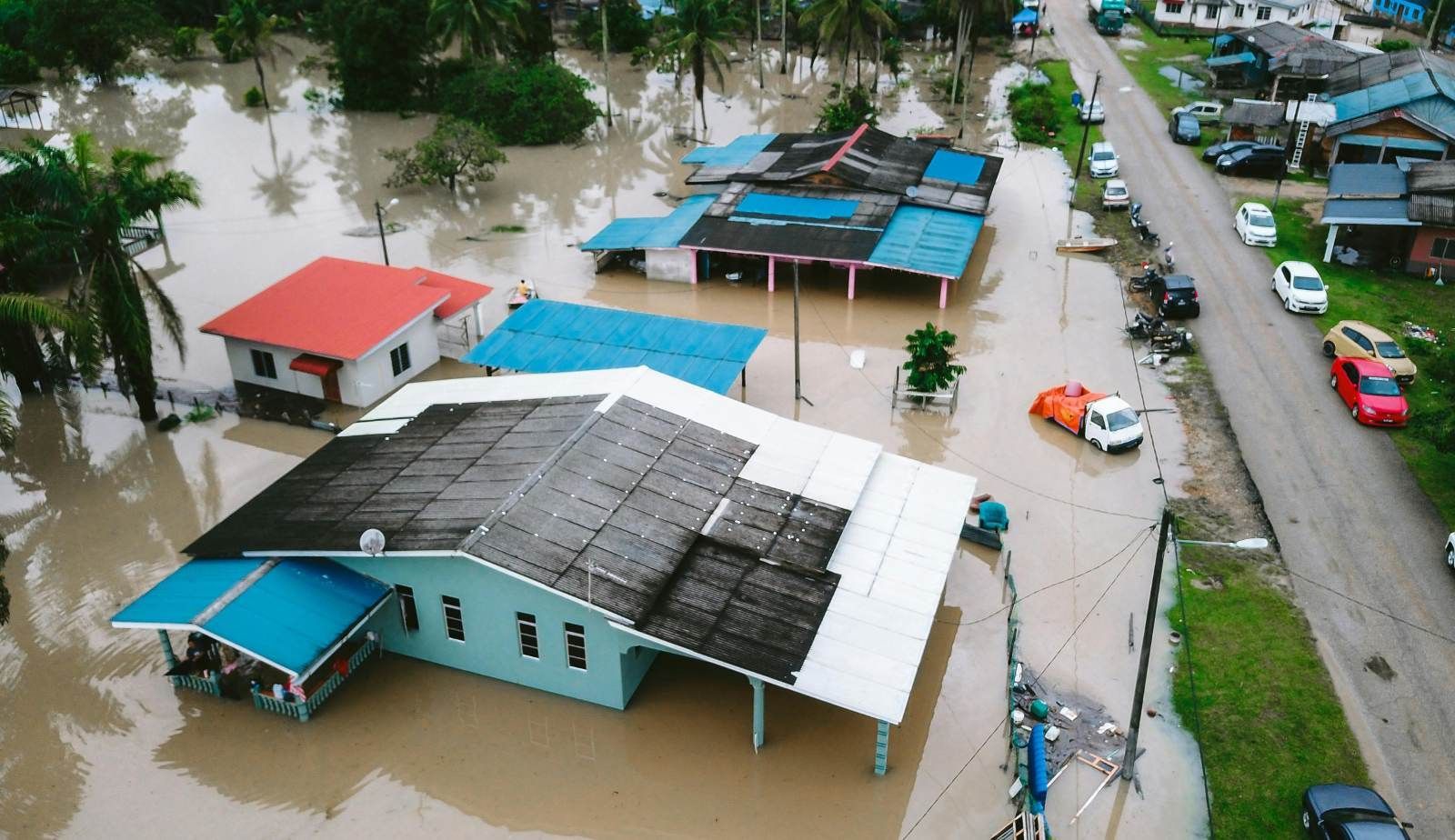Mastering Water Damage Restoration in Louisiana: A Comprehensive Guide
A comprehensive guide to water damage restoration in Louisiana, including the importance of quick action, the process of assessment and safety measures, water removal and drying, cleaning and sanitizing procedures, repair and restoration of structures, mold prevention and remediation strategies, choosing the right restoration company, the comparison between DIY and professional restoration, and preparing for future water damage incidents.

Introduction to Water Damage Restoration in Louisiana
Louisiana's susceptibility to water damage is significantly influenced by its geographical location and climatic conditions. The state's exposure to hurricanes and heavy rainfall places it among the top states for water damage incidents. For example, Hurricane Katrina's devastating impact in 2005 highlighted the urgent need for effective water damage restoration strategies in the region. The aftermath of such natural disasters underscores the importance of prompt and professional restoration services to restore properties and ensure the safety of residents. Moreover, Louisiana's unique environmental features, such as low-lying terrains and close proximity to water bodies like the Mississippi River and the Gulf of Mexico, enhance the risk of water damage in both residential and commercial buildings.
These geographical characteristics amplify the challenges faced during water damage incidents, requiring specialized expertise and equipment for efficient restoration processes. The state's susceptibility to flooding due to heavy rainfall adds another layer of complexity to the restoration efforts, necessitating thorough and comprehensive restoration procedures to address the aftermath of such events effectively.
Water damage incidents can have a significant financial impact, with the cost of restoration varying based on the extent of the damage and the required services. Factors such as the severity of water intrusion, the affected areas, and the type of restoration needed can influence the overall cost of the restoration process. In Louisiana, where water damage incidents are relatively common due to environmental factors like hurricanes and heavy rainfall, property owners need to be prepared for potential restoration expenses. Understanding the cost implications of water damage restoration can help individuals and businesses in Louisiana make informed decisions and take proactive measures to mitigate risks and protect their properties from extensive damage.
DryMax Mold offers specialized services in water damage restoration, mold removal, and fire damage restoration across various regions in Louisiana. Their expertise and commitment to high-quality work make them a trusted partner for property owners dealing with water damage incidents. By leveraging industry-leading practices and tailored solutions, DryMax Mold helps clients navigate the challenges of water damage restoration in Louisiana efficiently and effectively. Property owners facing water damage issues can rely on DryMax Mold's professional services to restore their properties and ensure a safe and secure environment for occupants.

Understanding Water Damage in Louisiana
Louisiana's susceptibility to water damage is further exacerbated by the state's subtropical climate, making it prone to frequent flooding incidents. The combination of intense rain events and the geographical landscape of low-lying areas and proximity to water bodies contributes significantly to the prevalence of water damage in the region. For example, cities like Baton Rouge often experience challenges due to their subtropical climate dynamics, leading to increased risks of flooding and subsequent property damage. Understanding the unique environmental factors that contribute to water damage incidents in Louisiana is essential for developing effective mitigation and restoration strategies tailored to the state's specific conditions.
In addition to the risk of flooding, Louisiana's proximity to the Gulf of Mexico and the Mississippi River also heightens the potential for water damage incidents. The state's expansive wetlands and marshes, while ecologically valuable, also increase the vulnerability of properties to water intrusion during extreme weather events. By recognizing these geographical features and climatic conditions, property owners in Louisiana can better prepare for potential water damage risks and implement preventive measures to safeguard their assets. Working with experienced restoration professionals who understand the intricacies of water damage in Louisiana is crucial for ensuring a prompt and effective response in times of crisis.
Louisiana's unique environmental challenges, such as high humidity levels and rapid mold growth, necessitate specialized approaches to water damage restoration. Restoration companies operating in Louisiana, like DryMax Mold, are well-versed in addressing the specific needs of properties in the region. By leveraging their expertise and understanding of Louisiana's environmental factors, these professionals can deliver tailored restoration solutions that mitigate risks and protect properties from the devastating effects of water damage incidents. Property owners in Louisiana can benefit from partnering with restoration experts who have a deep understanding of the state's unique water damage landscape and can provide effective solutions that cater to their specific needs.
Importance of Quick Action in Water Damage Restoration
When facing water damage in Louisiana, taking immediate action is crucial to minimize the impact and expedite the restoration process effectively. By swiftly addressing water damage, property owners can prevent the escalation of structural issues, mold growth, and health hazards for occupants. For instance, if a property suffers water intrusion due to a burst pipe, swift action such as shutting off the water source and contacting a restoration company can prevent extensive damage to the building's foundation and materials. Acting promptly after water damage not only safeguards the property but also promotes the well-being of individuals residing or working in the affected area.
Delaying the restoration process can lead to further damage and complications, increasing the overall restoration costs and prolonging the recovery period. Mold growth, structural deterioration, and secondary damage are common consequences of delayed action after water damage incidents. By contrast, immediate response and intervention by professional restoration teams can mitigate these risks and facilitate a more efficient restoration process. Property owners in Louisiana facing water damage issues should prioritize quick action to prevent additional damage and ensure a smoother and more cost-effective restoration experience.
Addressing water damage promptly is not only crucial for property preservation but also for the health and safety of occupants. Water-damaged environments can harbor harmful bacteria, mold spores, and other contaminants that pose health risks to individuals. By engaging professional restoration services promptly, property owners can create a safer living or working environment and prevent potential health issues associated with water damage. The rapid response teams employed by restoration companies like DryMax Mold are equipped to handle emergency situations promptly, ensuring that properties are restored efficiently and occupants are protected from health hazards.

Initial Assessment and Safety Measures
Professionals in the water damage restoration industry understand the importance of conducting detailed assessments to accurately diagnose the extent of the damage and develop a comprehensive restoration plan. By assessing hidden water damage, moisture levels, and potential mold growth areas, restoration experts can identify critical issues that need to be addressed. Safety measures play a crucial role in protecting the well-being of occupants and restoration workers during the assessment and restoration processes. These measures include wearing protective gear, securing the property, and addressing electrical hazards to create a safe working environment.
For example, in regions like Alexandria, Louisiana, where rapid mold growth is a common challenge due to high humidity levels, thorough assessments are essential to identify mold-affected areas and mitigate risks effectively. Restoration professionals prioritize safety protocols to minimize potential hazards and ensure a secure restoration environment for both the restoration team and the property occupants. By adhering to stringent safety guidelines and implementing best practices, restoration companies like DryMax Mold create a safe working environment that facilitates efficient and effective restoration processes.
In addition to conducting assessments and safety measures, restoration professionals pay close attention to environmental factors that may impact the restoration process. Factors such as temperature, humidity levels, and existing mold spore counts can influence the restoration approach and timeline. By integrating environmental considerations into their restoration strategies, professionals can tailor their services to the specific needs of each property, ensuring optimal outcomes and long-term restoration success. Property owners in Louisiana can benefit from working with restoration companies that prioritize detailed assessments, safety protocols, and environmental awareness in their restoration practices.
Water Removal and Drying Process
Efficient water removal and drying processes are essential components of successful water damage restoration efforts. Restoration professionals utilize advanced equipment, such as industrial-grade pumps and dehumidifiers, to extract water and moisture from affected areas swiftly and effectively. Proper ventilation and dehumidification techniques are employed to prevent secondary water damage, mold growth, and structural decay. By implementing these methods, restoration experts ensure that the property is thoroughly dried and restored to a safe and habitable condition.
For example, in Louisiana, where the subtropical climate exacerbates water damage incidents, rapid and thorough water removal is critical to preventing further damage and mold proliferation. Restoration companies like DryMax Mold employ specialized drying techniques that accelerate the restoration process and reduce the risk of secondary damage. By utilizing cutting-edge equipment and industry best practices, professionals can expedite the drying process and minimize the impact of water damage on the property. Property owners can rely on restoration experts to handle water removal and drying efficiently, ensuring a swift and effective restoration experience.
In addition to water extraction and drying, restoration professionals focus on moisture control and humidity management to prevent future water damage issues. By addressing underlying moisture concerns and implementing preventive measures, property owners can reduce the risk of recurring water damage incidents. Through comprehensive water removal and drying processes, restoration companies like DryMax Mold help property owners in Louisiana restore their properties and mitigate the long-term effects of water damage effectively. Property owners can trust restoration experts to deliver efficient and thorough water removal and drying services that promote property resilience and occupant safety.
Cleaning and Sanitizing Procedures
Thorough cleaning and sanitizing procedures are integral to the water damage restoration process, ensuring that the property is not only visually restored but also free from contaminants. Restoration professionals remove debris, disinfect surfaces, and apply antimicrobial solutions to prevent contamination and promote a safe and hygienic environment post-restoration. Sanitizing treatments eliminate bacteria, fungi, and other pathogens, safeguarding the property and its occupants from potential health risks. By following industry standards and best practices, restoration experts deliver cleaning and sanitizing services that meet stringent health and safety requirements.
For instance, in regions like Baton Rouge, where subtropical climate dynamics contribute to increased mold growth risks, professional cleaning services are essential to address mold contamination effectively. Restoration companies like DryMax Mold adhere to industry guidelines to ensure that properties are thoroughly cleaned and sanitized, minimizing health hazards and promoting a safe living or working environment. By employing specialized cleaning techniques and antimicrobial solutions, professionals can eliminate harmful pathogens and contaminants, creating a clean and healthy space for occupants to return to. Property owners can rely on restoration experts to deliver top-quality cleaning and sanitizing procedures that prioritize health and safety.
In addition to cleaning and sanitizing, restoration professionals focus on restoring indoor air quality and eliminating odors caused by water damage incidents. By implementing advanced air purification techniques and odor removal strategies, professionals can enhance the overall indoor environment and create a fresh and clean atmosphere for occupants. Property owners can benefit from restoration companies that offer comprehensive cleaning and sanitizing services tailored to their specific needs, ensuring that their properties are restored to a safe and habitable condition. Through meticulous cleaning and sanitizing procedures, restoration experts help property owners in Louisiana overcome the challenges of water damage and restore their properties to optimal conditions.

Repair and Restoration of Water-Damaged Structures
Expert technicians play a crucial role in evaluating structural damage, repairing compromised areas, and restoring affected materials to their pre-damaged condition. Restoration processes may involve repairing drywall, flooring, insulation, and other structural components damaged by water, ensuring that the property is structurally sound and safe for occupancy. By focusing on comprehensive repairs, technicians aim to enhance the property's resilience against future water damage incidents and prevent potential structural issues from arising.
Property owners facing water damage issues can benefit from the expertise of restoration professionals like DryMax Mold, who specialize in evaluating structural damage and implementing effective repair solutions. By conducting detailed assessments and developing customized restoration plans, restoration experts ensure that all structural issues are addressed promptly and efficiently. Through meticulous repair and restoration processes, professionals can restore the property to its original state and fortify it against potential water damage risks. Property owners can trust restoration experts to deliver high-quality repair services that enhance the property's durability and longevity.
In addition to repairing visible damage, restoration professionals focus on addressing hidden structural issues that may compromise the property's integrity. By conducting thorough inspections and utilizing advanced repair techniques, professionals can identify and rectify underlying structural damage caused by water intrusion. Property owners can rely on restoration experts to provide comprehensive repair and restoration services that restore the property to its pre-damaged state and ensure long-term structural stability. Through expert evaluation and precise repair solutions, restoration professionals help property owners navigate the challenges of water damage restoration and preserve the value and safety of their properties.
Mold Prevention and Remediation Strategies
Preventive measures play a critical role in mitigating mold growth post-water damage incidents in Louisiana, particularly in regions like Alexandria where rapid mold development is a common challenge. Implementing strategies such as moisture control, proper ventilation, and prompt leak repairs can significantly reduce the likelihood of mold proliferation in water-damaged areas. Immediate mold remediation is essential to prevent mold spores from spreading and causing health issues for occupants. By addressing mold issues promptly and effectively, property owners can protect their properties from the harmful effects of mold contamination.
Property owners in Louisiana can benefit from the expertise of restoration professionals like DryMax Mold, who specialize in mold prevention, remediation, and CIRS mold testing. By implementing preventive measures and offering comprehensive mold management solutions, restoration experts help property owners mitigate mold-related risks and safeguard their properties against future mold outbreaks. Through tailored mold prevention and remediation strategies, professionals create a healthy and mold-free environment for occupants, promoting overall well-being and safety. Property owners can trust restoration experts to deliver effective mold prevention and remediation services that protect their properties and ensure long-term mold management.
For example, DryMax Mold's proficiency in mold prevention, remediation, and CIRS mold testing equips property owners with the tools and knowledge needed to combat mold effectively. By offering specialized services that target mold at its source, restoration professionals help property owners create a mold-resistant environment that promotes occupant health and safety. Property owners in Louisiana facing mold-related challenges can rely on restoration experts to deliver tailored solutions that address their specific needs and ensure a mold-free living or working space. By partnering with restoration professionals who specialize in mold prevention and remediation, property owners can protect their investments and maintain a healthy indoor environment for years to come.
Choosing the Right Water Damage Restoration Company
Selecting the right restoration company is a crucial decision for property owners facing water damage incidents in Louisiana. Factors such as certifications, experience, availability, and customer reviews play a significant role in determining the suitability of a restoration company. By evaluating these factors, property owners can make informed decisions and choose a reputable restoration company that meets their specific needs and requirements. For instance, DryMax Mold's industry expertise, professional certifications, and positive customer testimonials establish credibility and trust among clients seeking reliable water damage restoration services.
Property owners in Louisiana can benefit from hiring a reputable restoration company like DryMax Mold, which offers quality services, timely responses, and personalized solutions for each restoration project. By partnering with a trusted restoration company, property owners can ensure that their properties are in capable hands and that the restoration process is handled with professionalism and expertise. DryMax Mold's commitment to excellence, industry-leading services, and customer-centric approach make them a preferred choice for water damage restoration in Louisiana. Property owners can rely on restoration experts like DryMax Mold to deliver superior restoration outcomes and ensure a seamless and efficient restoration experience.
In addition to certifications and experience, property owners should consider the range of services offered by a restoration company when making their selection. Restoration companies that provide comprehensive services, such as water damage restoration, mold removal, and fire damage restoration, offer property owners a one-stop solution for their restoration needs. By choosing a restoration company like DryMax Mold, property owners can access a wide range of services tailored to their specific requirements, ensuring a holistic approach to property restoration. Property owners can trust restoration experts who offer a diverse set of services to deliver quality results and meet their restoration needs effectively.
DIY vs. Professional Water Damage Restoration
The decision between do-it-yourself (DIY) restoration and professional services is a crucial consideration for property owners facing water damage incidents in Louisiana. While DIY approaches may appear cost-effective initially, they often lack the efficiency, expertise, and specialized equipment required for thorough restoration. Professional restoration services offer comprehensive solutions, advanced technologies, and industry knowledge for effective water damage mitigation. By engaging restoration experts like DryMax Mold, property owners can benefit from superior restoration outcomes, personalized care, and efficient solutions tailored to their specific needs.
For example, when comparing a DIY cleanup of a flooded basement to professional restoration services, a homeowner might overlook critical steps such as adequately drying out the affected area or sanitizing surfaces properly. In contrast, restoration professionals utilize industrial-grade equipment for water extraction, thorough drying processes, and specialized cleaning techniques to prevent secondary damage like mold growth and structural deterioration. By highlighting these specific examples, it becomes evident that professional restoration services offer a level of expertise and attention to detail that DIY methods often lack. Property owners facing water damage incidents in Louisiana can benefit from engaging restoration experts to ensure a thorough and effective restoration process that safeguards their properties and promotes occupant safety.
Property owners should also consider the long-term benefits of professional restoration services when making their decision. While DIY efforts may provide immediate cost savings, they often lack the durability and effectiveness of professional restoration solutions. Restoration companies like DryMax Mold deliver superior restoration outcomes and long-term protection for properties, ensuring that the restoration process is conducted with precision and expertise. By choosing professional restoration services over DIY approaches, property owners can rest assured that their properties are in capable hands and that the restoration process is handled with professionalism and efficiency.
Preparing for Future Water Damage Incidents
Proactive measures are essential for property owners in Louisiana to minimize the risk of future water damage incidents and safeguard their properties against potential threats. Routine property inspections, maintenance of drainage systems, and installation of flood prevention measures help reduce the likelihood of water damage and mitigate risks effectively. For example, ensuring that gutters are clear of debris and functioning properly can prevent water from accumulating near the foundation of a building, reducing the risk of water seepage into the structure. By implementing preventive strategies and collaborating with restoration experts like DryMax Mold, property owners can enhance their properties' resilience against water damage and ensure long-term protection.
Consultation with restoration professionals like DryMax Mold for property assessments, emergency planning, and preventive strategies enhances property resilience against water damage incidents. By partnering with experienced restoration experts, property owners can access valuable insights and recommendations to fortify their properties against potential risks. DryMax Mold's guidance on proactive measures, emergency planning, and property maintenance assists clients in minimizing water damage risks and ensuring property safety. Property owners can rely on restoration experts to provide tailored solutions that address their specific needs and protect their properties from potential water damage threats.
In addition to preventive measures, property owners should also consider the importance of emergency planning in the event of water damage incidents. Developing a comprehensive emergency response plan that outlines steps for mitigating water damage, contacting restoration professionals, and ensuring occupant safety can help property owners respond effectively to emergencies. By working with restoration experts like DryMax Mold to create emergency plans and prepare for potential water damage incidents, property owners can minimize risks and protect their properties from the devastating effects of water intrusion. Property owners can trust restoration professionals to provide guidance on emergency planning and proactive measures that enhance property resilience against water damage incidents.
Conclusion on Efficient Water Damage Restoration Practices
Timely and professional water damage restoration services are crucial for preserving property value, ensuring occupant safety, and preventing extensive damage in the aftermath of water-related incidents. Louisiana's susceptibility to hurricanes and heavy rainfall underscores the importance of prompt and efficient restoration processes to mitigate the impact of water damage effectively. For instance, rapid response teams like DryMax Mold are equipped to address immediate restoration needs, providing property owners with peace of mind amidst challenging circumstances. By leveraging industry expertise, cutting-edge technologies, and tailored solutions, restoration professionals help property owners navigate water damage challenges efficiently and effectively.
DryMax Mold's commitment to excellence, industry-leading services, and customer-centric approach make them a trusted partner for water damage restoration in Louisiana. By offering a comprehensive range of services and tailoring solutions to meet specific needs, DryMax Mold ensures that property owners receive high-quality restoration outcomes that prioritize property safety and occupant well-being. Property owners facing water damage incidents can rely on restoration experts like DryMax Mold to deliver superior restoration services that restore properties to their pre-damaged state and promote long-term resilience
For expert fire damage restoration and mold remediation services, consider visiting DryMax Water - Fire - Mold to receive comprehensive support for any fire-related incidents in Louisiana.
You might also like
DryMax Restoration Blogs




